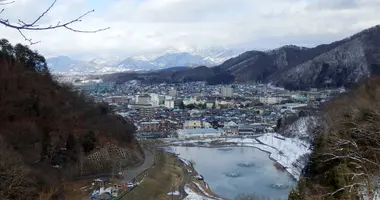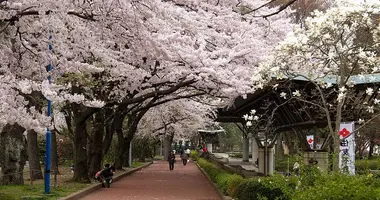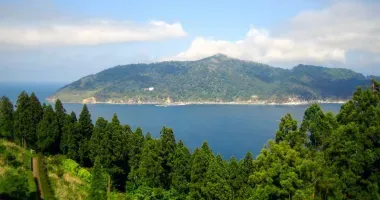Matsushima 松島
- Published on : 28/09/2020
- by : Japan Experience
- Youtube
Matsushima is famous for its view of over the bay, considered one of Japan's Three Great Sights. However, it offers visitors ancient cultural treasures as well.
Matsushima Travel Guide
Matsushima is famous for its view of over the bay of the same name containing 260 tiny pine-clad islands. This is considered one of Japan's Three Great Sights (Nihon Sankei). Matsushima's beauty was immortalized in one of wandering haiku-master Basho's most famous poems.
Matsushima ("Pine Islands") is a bay in Miyagi prefecture, 25 km north-east of the prefectural capital, Sendai.
Matsushima is very rural, with a local population of less than 20,000. It is also famous for the delicious oysters farmed in the bay, for its historically important temples, and for its colorful Obon lantern festival in August.
Matsushima Attractions - Matsushima Bay Cruises
As well as taking in the wonderful views of Matsushima Bay from the shore, visitors can enjoy sightseeing cruises on the water.
Matsushima Bay is dotted with around 260 small, pine-covered islands and is considered one of Japan's three big scenic views (nihon sankei 日本三景), all three being views of the sea. (The others are Miyajima Island in Hiroshima and Amanohashidate in Kyoto Prefecture).
There are sightseeing cruises on the bay lasting about an hour run by Marubun Matsushima Kisen and a regular ferry service between Matsushima and Shiogama (50 minutes) operated by Matsushima Bay Cruise.
Miyato Island forms the eastern edge of Matsushima Bay, separating it from Ishinomaki Bay just east of it, and at its south-easternmost tip features the imposing Sagakei Gorge with cliffs that form a dramatic contrast with the tranquility of Matsushima Bay. Reasonably priced cruises of the cliffs leave from a jetty on Oku-Matsushima, accessible from Route 27, near the Ohtakamori Kanko Hotel.
Oshima Island (雄島) is a tiny island on the west side of Matsushima Bay accessible from the mainland by bridge. Oshima was where Zen monks did their ascetic training. There are Buddhist rock carvings and meditation caves. The island also has a lighthouse. Oshima is accessed from Matsushima Seaside Park, less than 10 minutes walk from Matsushimakaigan Station on the Senseki Line.
Fukuurajima is a larger island about 15 minutes walk further north around the bay, and is also reached by bridge - a picturesque 250m-long vermilion one. Fukuurajima is designated a park, is richly forested, and has remnants of ancient habitation, such as middens and an old Benzaiten shrine over 1,000 years old.
Matsushima Temples
Zuiganji & Entsuin are two of the must-see Buddhist temples in Matsushima and are right next to each other.
Zuiganji Temple dates from the Heian Period, though the present buildings were constructed by Matsuname Date much later, in 1606. The main hall contains precious painted screens and ornate carvings. The approach to the temple is through an avenue of imposing cedar trees with meditation caves and Buddhist statues on your right.
Entsuin Temple is next to and just south of Zuiganji. Etsuin was built to commemorate Date Mitsumune, the grandson of Date Masamune. Mitsumune died in Edo Castle at age 19, feared poisoned by the Tokugawa regime. The grounds also contain a rose garden, a Japanese rock garden and statues of seven retainers who committed suicide when their lord Mitsumune died.
On Entsuin's grounds is Date Mitsumune's mausoleum, the Sankeiden. It is golden inside and contains European-style motifs of crosses and roses influenced by the journey of Hasekura Tsunenaga's embassy to the Americas and Europe at the request of Masamune from 1613-1620.
Godaido Temple is a small temple pavilion situated on a small islet just west of the Matsushima Century Hotel. Godaido is on the furthest of three tiny linked islands, reached by a vermilion bridge. The interior of Godaido temple is opened to the public just once every 33 years. The last time was in 2006. The temple was constructed on the orders of Matsuname Date in the early 1600s.
A little south-west of Entsuin is the Kanrantei pavilion, a tea house originally given as a gift to the Date clan by feudal warlord Toyotomi Hideyoshi and brought from Kyoto and reassembled here in its present location overlooking the bay. Matcha green tea is served and there is a small museum, the Matsushima Hakubutsukan, in the grounds.
Other museums in Matsushima include the Michinoku Date Masamune Museum dedicated to Sendai's greatest historical figure, this time using wax dolls to recreate his life and times. The Matsushima Orgel Museum exhibits 134 music boxes purchased from the National Museum of Belgium including the world's largest concert organ (7m by 9m); and the Kyohei Fujita Museum of Glass.
Festivals in Matsushima
Matsushima's major festivals are the Matsushima Oyster Festival in February held at the Matsushima Beach Central Plaza and the Toro Nagashi Hanabi Taikai during the Obon period in the middle of August. There are fireworks and lighted lanterns floated out in the ocean.
Nightlife & Eating Out
Matsushima pretty much shuts down after dark when the last tourist buses have departed. There are a few fine seafood restaurants to sample if you are staying overnight.
Access to Matsushima
Matsushima is a half-day or full-day trip from Sendai, or visitors may prefer to base themselves here and journey in to Sendai.
Train
The nearest station to Matsushima Bay is Matsushima-kaigan Station on the JR Senseki Line. Express trains take 24 minutes from Sendai. JR Matsushima Station which is over a kilometer from the bay area can be reached in the same time by local train on the Tohoku Main Line from Sendai. Sendai is connected to Tokyo by the Tohoku Shinkansen with the journey taking just under two hours.
Ferry
There is a regular ferry service between Matsushima and the fishing port of Shiogama (50 minutes) operated by Matsushima Bay Cruise.
















